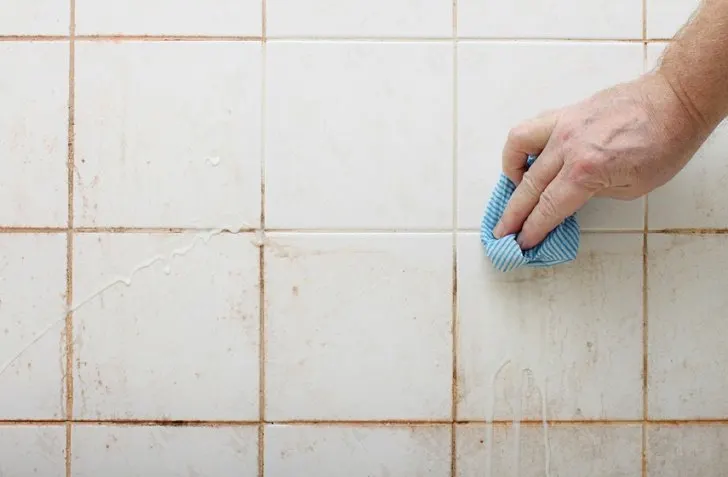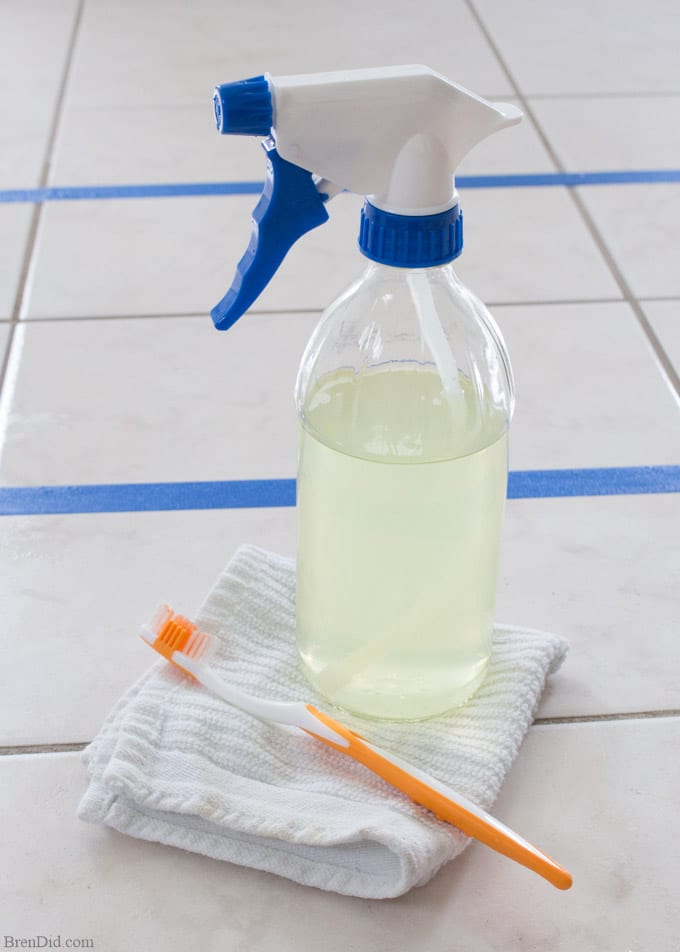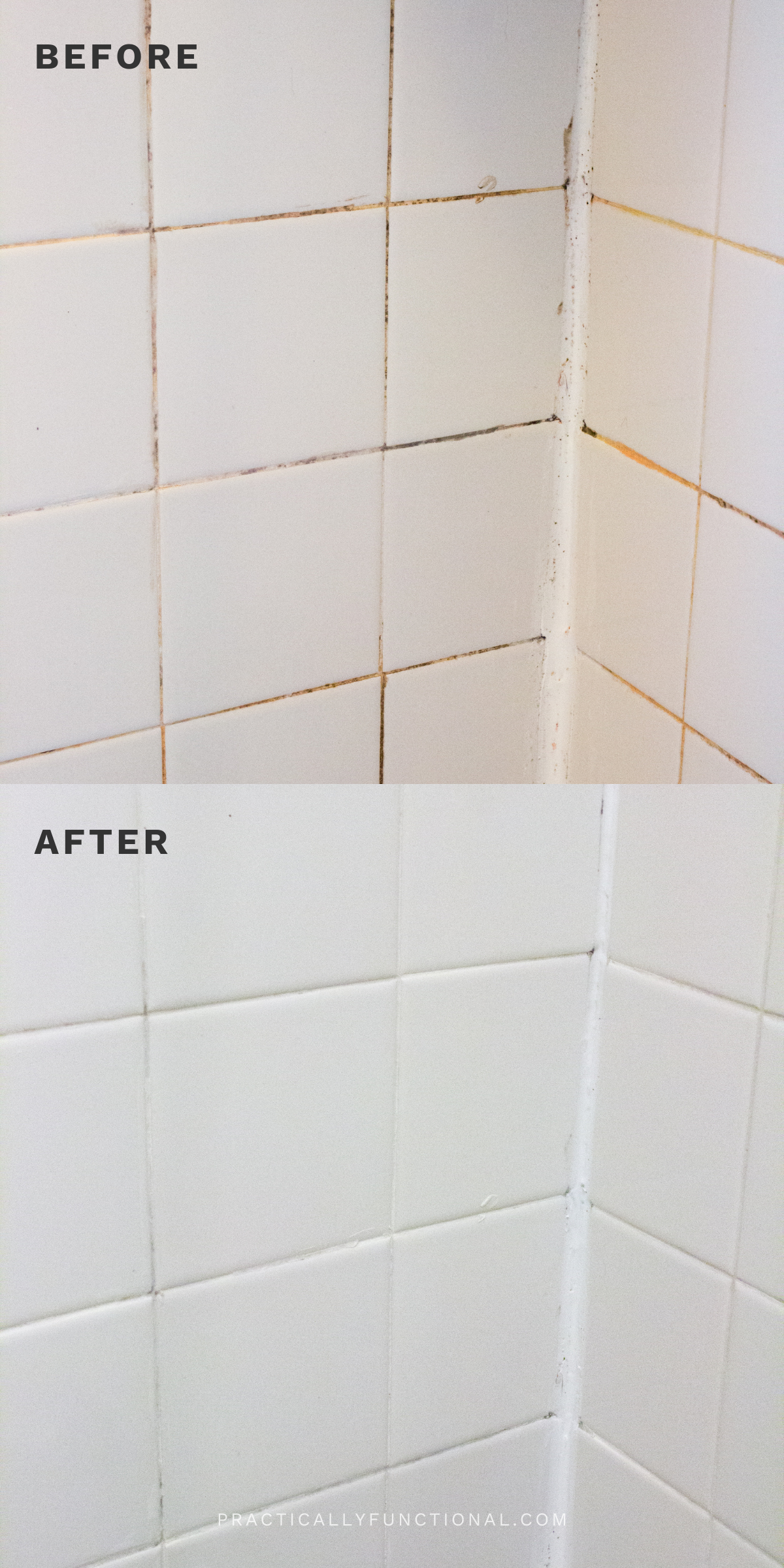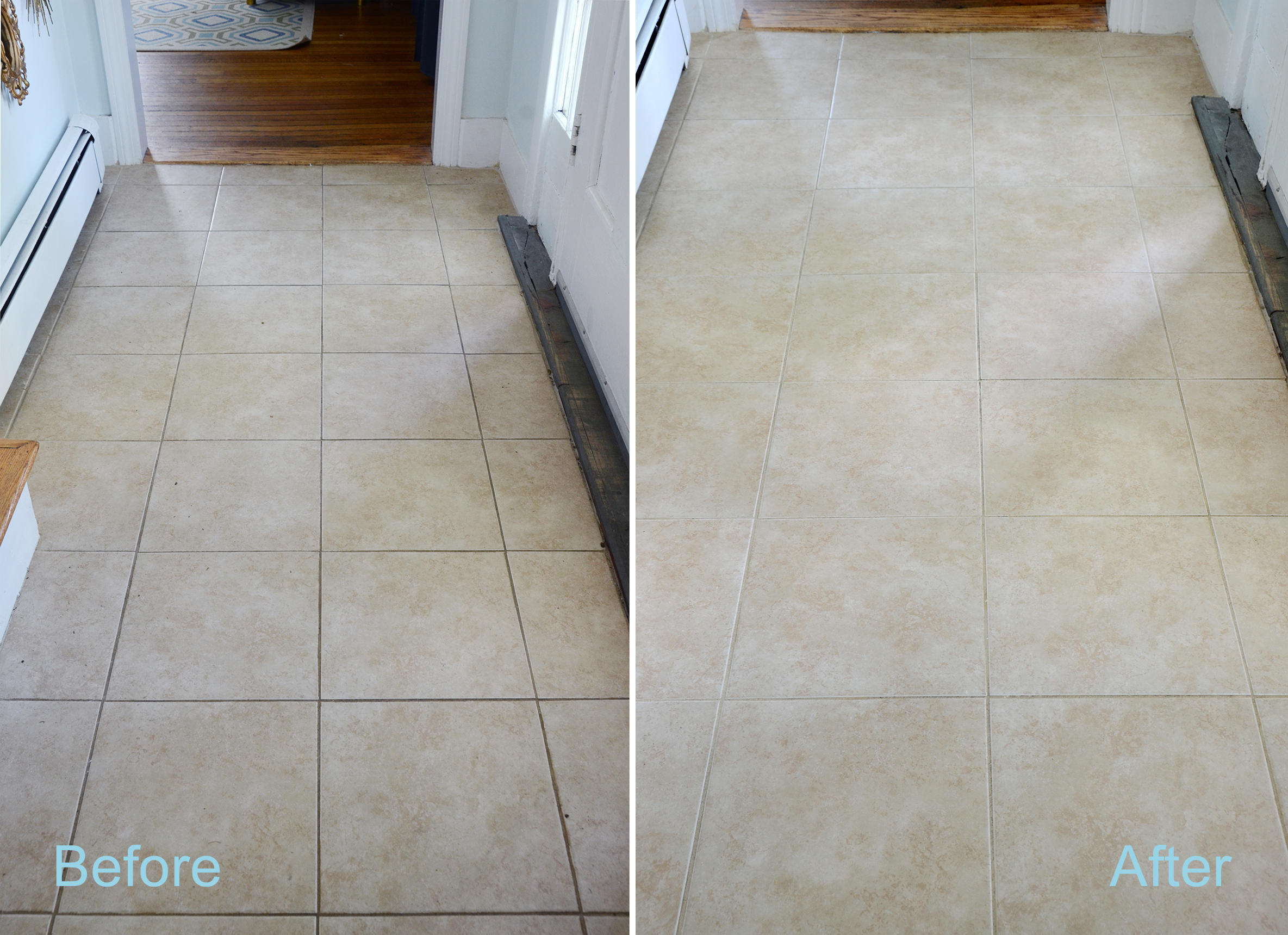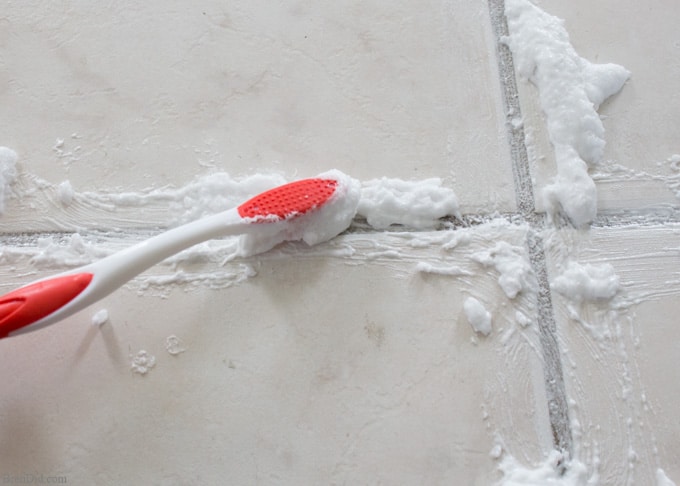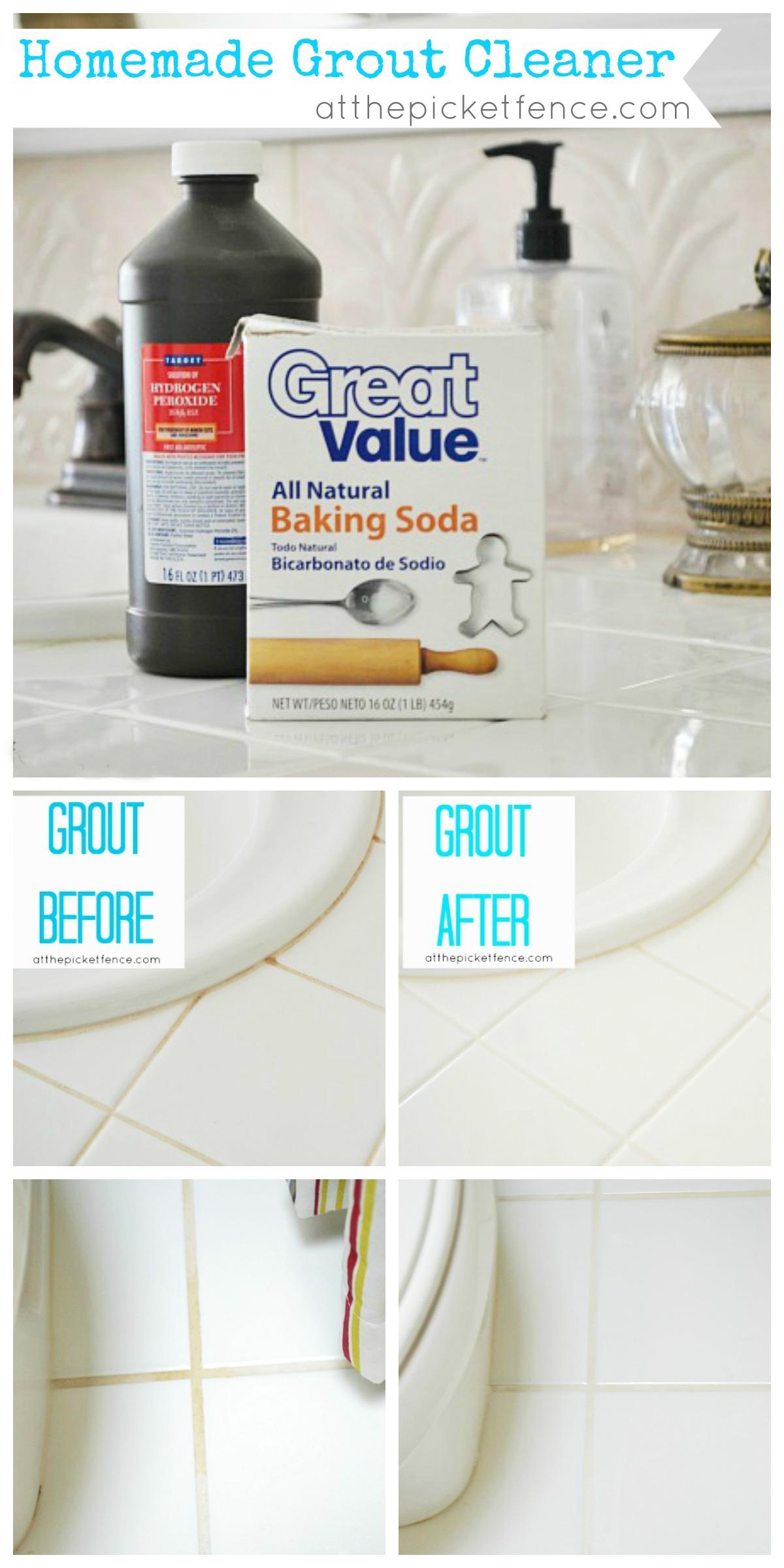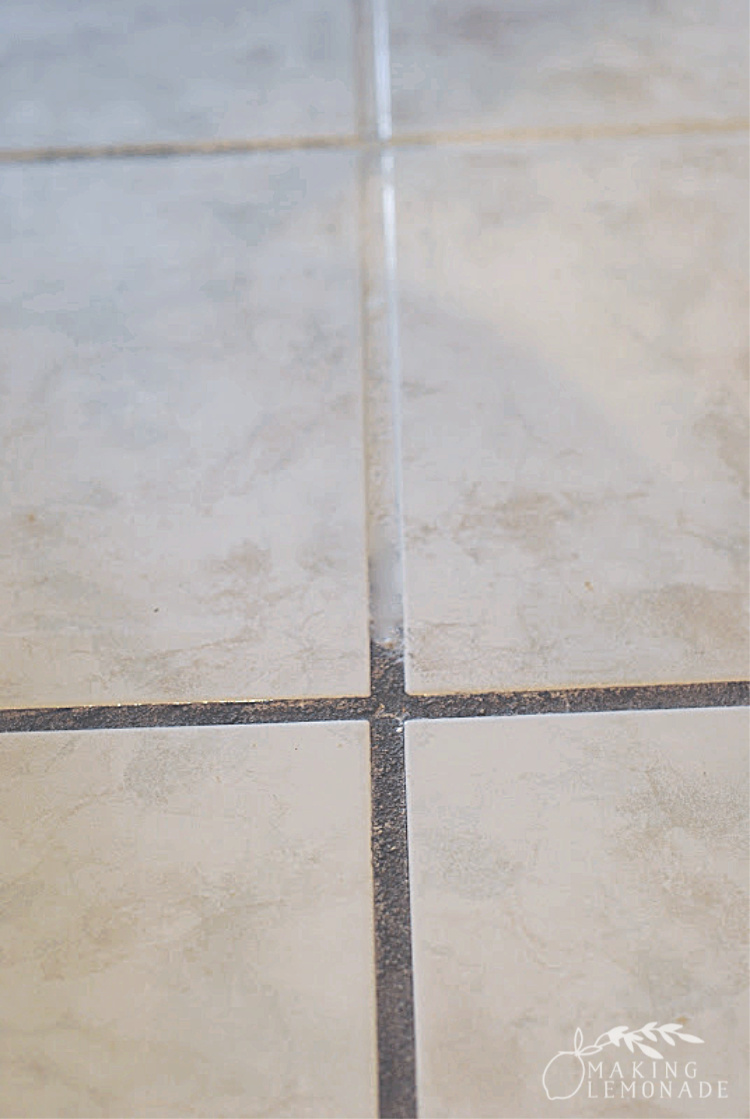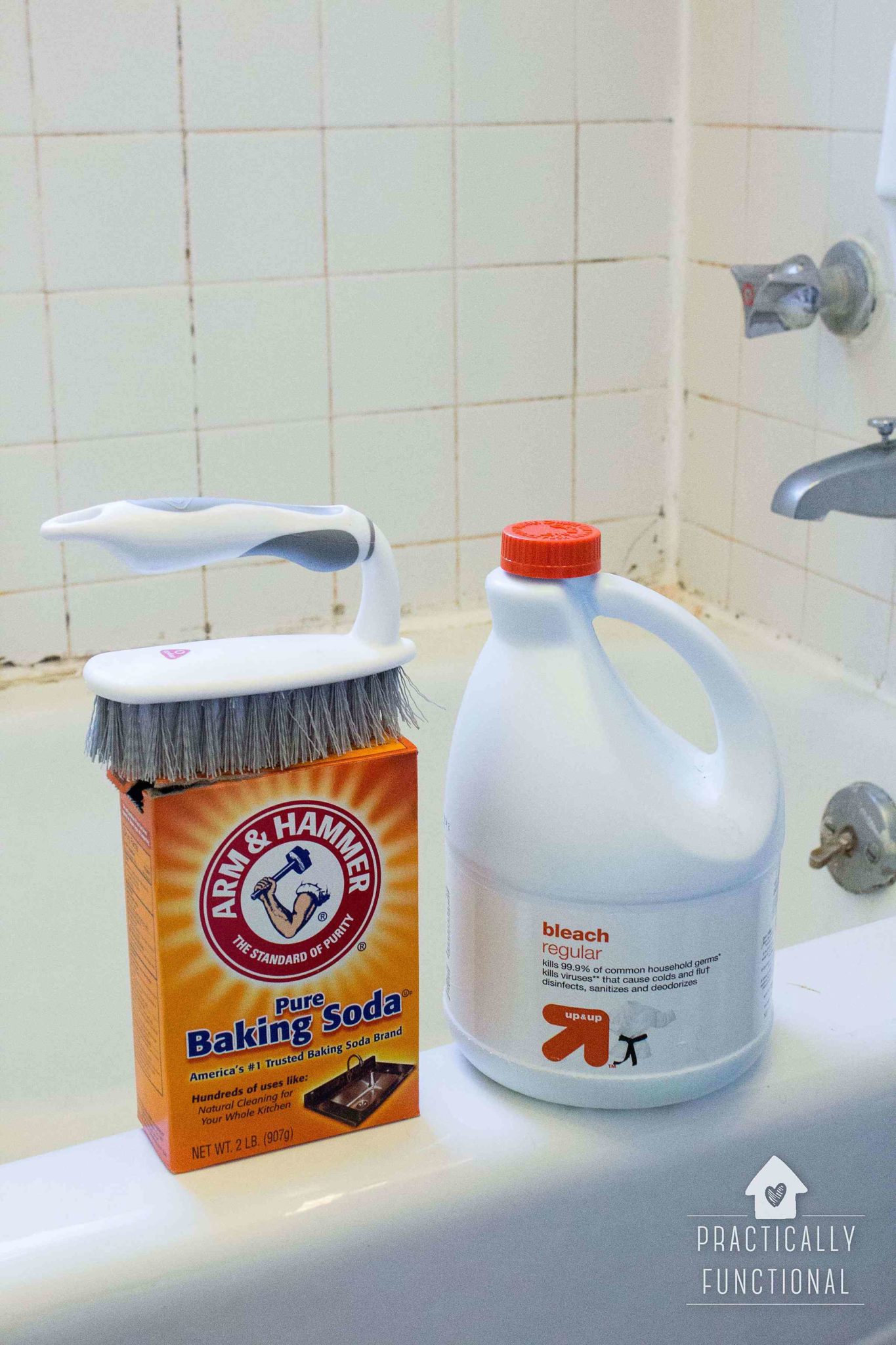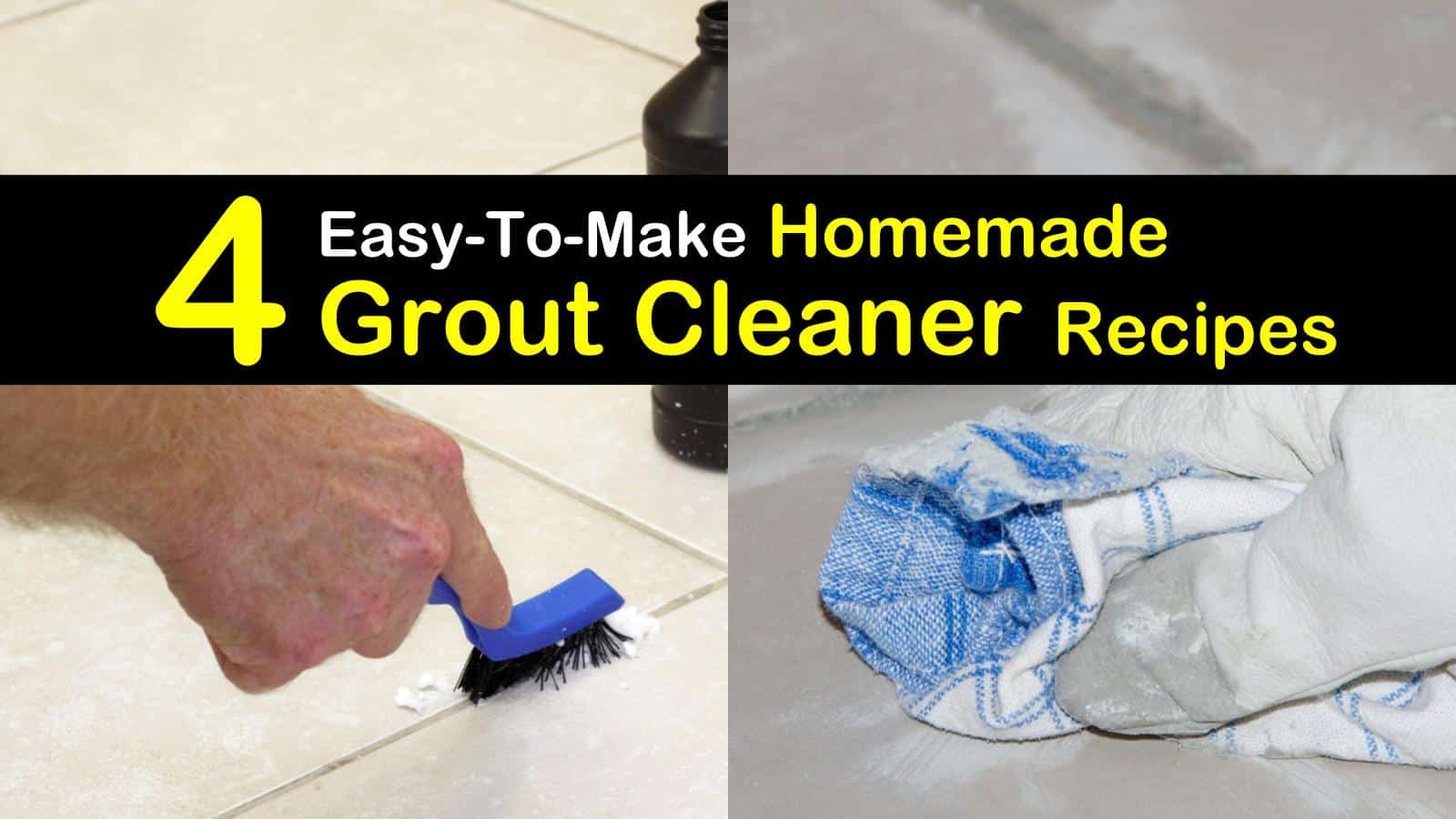A Guide to Cleaning Bathroom Tile Grout Without Harsh Chemicals
Maintaining clean tile grout in your bathroom doesn’t have to involve harsh chemicals that can be harmful to both your health and the environment. There are plenty of natural alternatives that are just as effective at removing grime and mold without compromising safety. Here’s a guide to cleaning bathroom tile grout using gentle, eco-friendly methods.
- Vinegar and Baking Soda: A powerful duo for cleaning grout, vinegar and baking soda create a natural foaming action that helps lift dirt and stains. Simply mix equal parts vinegar and water in a spray bottle and spray the solution onto the grout. Then, sprinkle baking soda over the sprayed area and scrub with a brush. Rinse thoroughly with water to reveal sparkling clean grout.
- Hydrogen Peroxide: Hydrogen peroxide is another natural cleaner that works wonders on tile grout. Its antibacterial properties help kill mold and mildew while lifting stubborn stains. Pour hydrogen peroxide directly onto the grout lines and let it sit for a few minutes. Scrub with a brush and rinse thoroughly. For extra cleaning power, mix hydrogen peroxide with baking soda to form a paste and apply it to the grout.
- Lemon Juice: The acidic nature of lemon juice makes it an effective cleaner for removing grime and brightening grout lines. Simply squeeze fresh lemon juice onto the grout and let it sit for about 10 minutes. Scrub with a brush and rinse with water. The natural citrus scent will leave your bathroom smelling fresh and clean.
- Steam Cleaning: Steam cleaning is a chemical-free way to deep clean tile grout and kill bacteria and mold. Use a steam cleaner with a narrow nozzle attachment to direct steam directly onto the grout lines. The high temperature of the steam helps loosen dirt and grime, making it easier to remove with a brush or cloth. Steam cleaning is also an eco-friendly option since it doesn’t require any additional cleaning solutions.
- Essential Oils: Add a few drops of essential oils such as tea tree oil, lavender oil, or eucalyptus oil to your homemade cleaning solutions for an extra boost of cleaning power and a pleasant fragrance. These oils have natural antibacterial properties that help kill germs and prevent mold growth. Plus, they leave behind a refreshing scent that lingers in your bathroom.
- Regular Maintenance: To keep your bathroom tile grout clean without harsh chemicals, it’s important to establish a regular cleaning routine. Wipe down the tiles and grout after each shower or bath to prevent soap scum and mildew buildup. Use a squeegee to remove excess water from the tiles and grout lines, then spray with a natural cleaning solution and scrub as needed. By staying on top of maintenance, you can keep your grout looking clean and fresh without resorting to harsh chemicals.
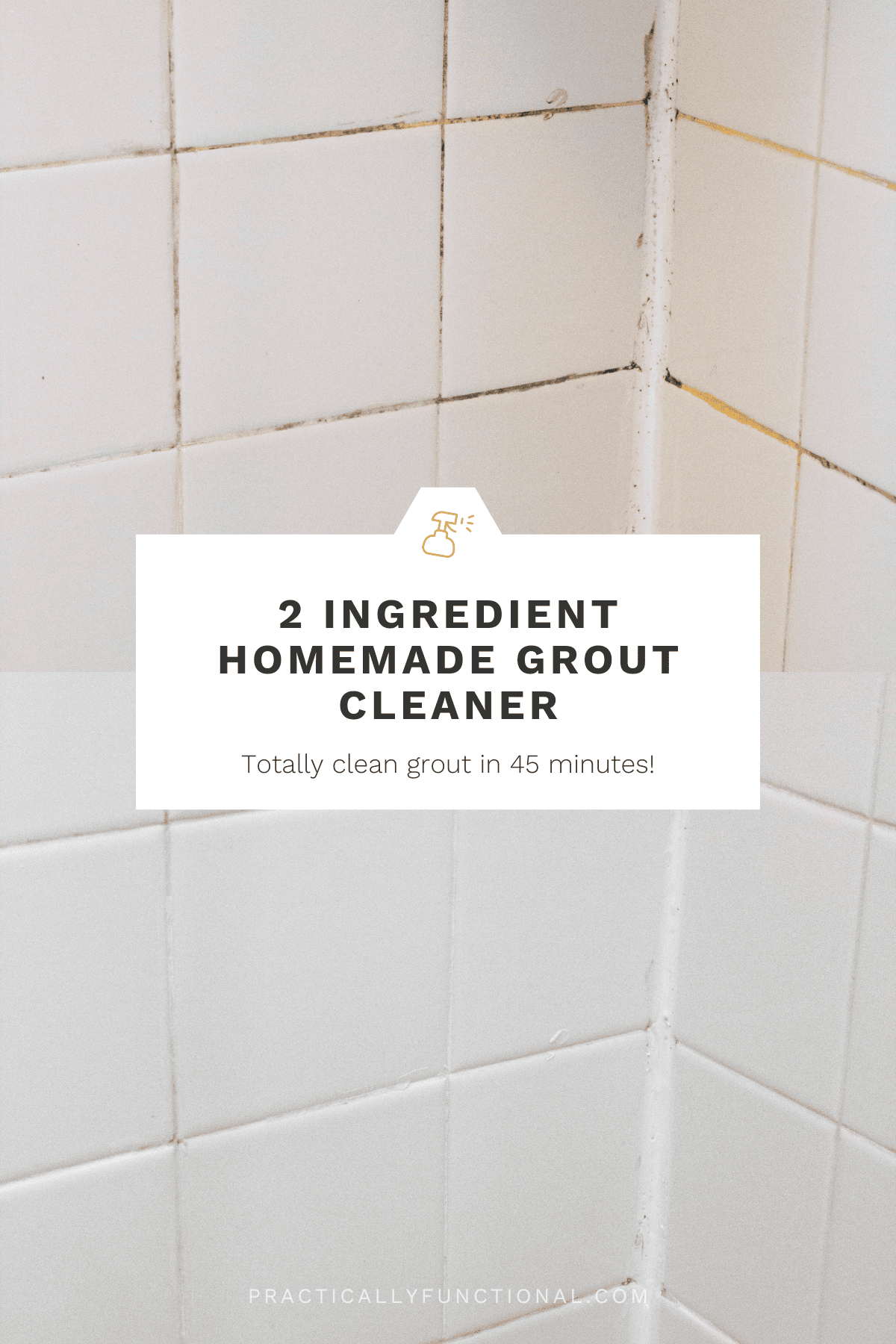
Homemade Solutions for Sparkling Clean Bathroom Tile Grout
When it comes to cleaning bathroom tile grout, you don’t need to rely on expensive commercial cleaners filled with harsh chemicals. Many effective cleaning solutions can be made using simple ingredients found in your pantry. From baking soda to vinegar, these household staples can help you achieve sparkling clean grout without breaking the bank. Here are some homemade solutions to try for cleaning bathroom tile grout.
Baking Soda Paste: Baking soda is a versatile cleaning agent that can help lift dirt and stains from tile grout. To make a baking soda paste, mix baking soda with water until it forms a thick, spreadable consistency. Apply the paste to the grout lines using a toothbrush or scrub brush, then let it sit for about 10 minutes. Scrub the grout with the brush, then rinse with water to reveal clean, refreshed grout.
Vinegar and Water Solution: Vinegar is a natural disinfectant and deodorizer that can help remove grime and mildew from tile grout. Mix equal parts vinegar and water in a spray bottle and spray the solution onto the grout lines. Let it sit for a few minutes to loosen dirt and stains, then scrub with a brush. Rinse with water to remove any residue. The acidity of the vinegar helps dissolve mineral deposits and soap scum, leaving your grout looking clean and bright.
Hydrogen Peroxide and Baking Soda: For tough stains and stubborn grime, a mixture of hydrogen peroxide and baking soda can work wonders. Combine equal parts hydrogen peroxide and baking soda to form a paste, then apply it to the grout lines using a brush. Let it sit for about 10 minutes, then scrub the grout with the brush. Rinse with water to remove any residue. The fizzing action of the hydrogen peroxide and baking soda helps lift dirt and stains from the grout, leaving it clean and refreshed.
Lemon Juice and Salt Scrub: Lemon juice is a natural cleaner and deodorizer that can help brighten tile grout and remove stains. Mix lemon juice with salt to form a thick paste, then apply it to the grout lines using a brush. Let it sit for a few minutes, then scrub the grout with the brush. Rinse with water to remove any residue. The acidity of the lemon juice helps dissolve dirt and stains, while the abrasive texture of the salt helps scrub away grime, leaving your grout looking clean and revitalized.
Steam Cleaning: Steam cleaning is an effective method for deep cleaning tile grout without using any chemicals. Use a steam cleaner with a narrow nozzle attachment to direct steam directly onto the grout lines. The high temperature of the steam helps loosen dirt and grime, making it easier to remove with a brush or cloth. Steam cleaning is also an eco-friendly option since it doesn’t require any additional cleaning solutions.
Essential Oils: Add a few drops of essential oils such as tea tree oil, lavender oil, or eucalyptus oil to your homemade cleaning solutions for an extra boost of cleaning power and a pleasant fragrance. These oils have natural antibacterial properties that help kill germs and prevent mold growth. Plus, they leave behind a refreshing scent that lingers in your bathroom.
Eco-Friendly Methods for Removing Grime and Mold from Tile Grout
Cleaning tile grout in your bathroom doesn’t have to involve harsh chemicals that can be harmful to your health and the environment. There are plenty of eco-friendly cleaning methods that are just as effective at removing grime and mold without compromising safety. From natural cleaners to green cleaning tools, below are some eco-friendly tips for keeping your bathroom tile grout clean and fresh.
Use Natural Cleaners: Opt for natural cleaning products that are free from harsh chemicals and toxins. Look for eco-friendly cleaners that are made with plant-based ingredients and biodegradable formulas. Many natural cleaners contain ingredients such as vinegar, baking soda, and essential oils that are effective at removing grime and mold without leaving behind harmful residues. Choose products that are certified as environmentally friendly by reputable organizations such as Green Seal or EcoLogo.
Make Your Own Cleaning Solutions: Instead of buying commercial cleaners, consider making your own homemade cleaning solutions using simple ingredients such as vinegar, baking soda, and lemon juice. These household staples are effective at removing dirt, grime, and stains from tile grout without the need for harsh chemicals. Plus, making your own cleaners is more cost-effective and environmentally friendly than buying pre-packaged products.
Use Eco-Friendly Cleaning Tools: Choose cleaning tools that are made from sustainable materials and are designed to minimize waste. Look for scrub brushes with natural bristles made from materials such as bamboo or plant fibers. Opt for reusable cleaning cloths and sponges instead of disposable ones, and wash them regularly to reduce waste. By choosing eco-friendly cleaning tools, you can minimize your environmental footprint while keeping your bathroom tile grout clean and fresh.
Conserve Water: When cleaning your bathroom tile grout, be mindful of your water usage to conserve this precious resource. Turn off the tap when you’re not actively rinsing or scrubbing, and avoid leaving the water running unnecessarily. Use a bucket or basin to collect excess water and reuse it for other cleaning tasks or watering plants. By conserving water, you can reduce your environmental impact and help protect freshwater resources for future generations.
Ventilate Properly: Proper ventilation is essential for preventing mold and mildew growth in your bathroom. Use exhaust fans or open windows to promote air circulation and reduce humidity levels, especially during and after hot showers or baths. Install a timer switch on your exhaust fan to ensure it runs for at least 15-20 minutes after each use. By properly ventilating your bathroom, you can help prevent mold and mildew from taking hold and keep your tile grout clean and mold-free.
Practice Regular Maintenance: Establish a regular cleaning routine to keep your bathroom tile grout clean and fresh without the need for harsh chemicals. Wipe down the tiles and grout after each shower or bath to remove soap scum and prevent mold and mildew buildup. Use a squeegee to remove excess water from the tiles and grout lines, then spray with a natural cleaning solution and scrub as needed. By staying on top of maintenance, you can keep your grout looking clean and fresh while minimizing the need for heavy-duty cleaning products.
Preventive Strategies for Keeping Bathroom Tile Grout Clean and Fresh
Keeping your bathroom tile grout clean and fresh doesn’t have to be a daunting task. With the right preventive strategies and maintenance routines, you can keep grime and mold at bay and preserve the beauty of your tile grout for years to come. Here are some preventive strategies for keeping bathroom tile grout clean and fresh.
Seal Grout Regularly: Grout is porous and prone to absorbing dirt, moisture, and stains. To protect your grout from damage and discoloration, seal it regularly with a quality grout sealer. Apply the sealer according to the manufacturer’s instructions, ensuring that the grout lines are thoroughly coated and sealed. A good quality grout sealer will create a protective barrier that repels water, dirt, and stains, making it easier to clean and maintain your grout over time.
Use Mild Cleaning Solutions: Avoid using harsh chemical cleaners that can damage and discolor grout over time. Instead, opt for mild cleaning solutions that are gentle yet effective at removing dirt and grime. Mix equal parts vinegar and water in a spray bottle and use it to clean the grout regularly. For tougher stains, make a paste using baking soda and water and apply it to the grout lines. Let it sit for a few minutes before scrubbing with a brush and rinsing with water.
Wipe Down Tiles After Each Use: To prevent soap scum and mildew buildup, wipe down the tiles and grout after each shower or bath. Use a squeegee to remove excess water from the tiles and grout lines, then wipe them down with a clean, damp cloth. This simple step can help prevent dirt, grime, and mold from accumulating on the grout and keep it looking clean and fresh between deeper cleanings.
Ventilate Your Bathroom: Proper ventilation is essential for preventing mold and mildew growth in your bathroom. Use exhaust fans or open windows to promote air circulation and reduce humidity levels, especially during and after hot showers or baths. Install a timer switch on your exhaust fan to ensure it runs for at least 15-20 minutes after each use. By properly ventilating your bathroom, you can help prevent mold and mildew from taking hold and keep your tile grout clean and fresh.
Address Grout Repairs Promptly: Inspect your grout regularly for signs of damage or deterioration, such as cracks, chips, or missing sections. Address any grout repairs promptly to prevent further damage and maintain the integrity of your tile installation. Use a grout saw to remove damaged grout and replace it with fresh grout using a grout float. Allow the grout to cure completely before sealing it to protect it from future damage.
Avoid Abrasive Cleaning Tools: When cleaning your bathroom tile grout, avoid using abrasive cleaning tools such as steel wool or abrasive scrub pads, as they can scratch and damage the grout. Instead, opt for softer cleaning tools such as nylon scrub brushes or cleaning cloths. These gentler tools are effective at removing dirt and grime without causing damage to the grout.
Solutions for Stubborn Stains and Discoloration in Tile Grout
Stubborn stains and discoloration can detract from the beauty of your bathroom tile grout, making it look dirty and dingy. Fortunately, there are several solutions for tackling tough stains and restoring your grout to its original pristine condition. From homemade cleaners to professional treatments, here are some troubleshooting tips for addressing common issues with tile grout.
Baking Soda and Vinegar Paste: For tough stains and discoloration, try making a paste using baking soda and vinegar. Mix equal parts baking soda and vinegar to form a thick paste, then apply it to the stained grout lines using a brush. Let the paste sit for about 15-20 minutes to allow it to penetrate the stains, then scrub the grout with a brush. Rinse with water to remove any residue. The abrasive texture of the baking soda and the acidic properties of the vinegar work together to lift dirt and stains from the grout, leaving it clean and refreshed.
Hydrogen Peroxide and Oxygen Bleach: Hydrogen peroxide and oxygen bleach are both effective at removing tough stains and discoloration from tile grout. Pour hydrogen peroxide or oxygen bleach directly onto the stained grout lines and let it sit for about 15-20 minutes to allow it to penetrate the stains. Scrub the grout with a brush, then rinse with water to remove any residue. Repeat the process as needed until the stains are completely removed. These powerful cleaners help break down dirt and grime, making it easier to lift stains from the grout.
Steam Cleaning: Steam cleaning is an effective method for removing stubborn stains and discoloration from tile grout without the use of harsh chemicals. Use a steam cleaner with a narrow nozzle attachment to direct steam directly onto the stained grout lines. The high temperature of the steam helps loosen dirt and grime, making it easier to remove with a brush or cloth. Steam cleaning is also an eco-friendly option since it doesn’t require any additional cleaning solutions.
Professional Grout Cleaning Services: If you’ve tried DIY cleaning methods without success, consider hiring a professional grout cleaning service to tackle tough stains and discoloration. Professional cleaners have specialized equipment and expertise to deep clean tile grout and restore it to like-new condition. They use powerful cleaning solutions and high-pressure steam cleaning techniques to lift dirt and stains from the grout, leaving it clean and refreshed. While professional cleaning services may be more expensive than DIY methods, they can save you time and effort and ensure superior results.
Grout Re-Coloring: If your grout is severely stained or discolored and cleaning alone isn’t enough to restore it, consider re-coloring the grout to give it a fresh, uniform appearance. Grout re-coloring involves applying a color sealant to the grout lines to change or refresh the color. Choose a color sealant that closely matches the original color of the grout or opt for a completely new color to give your bathroom a fresh new look. Grout re-coloring is a cost-effective way to rejuvenate tired-looking grout and enhance the overall appearance of your bathroom.
Preventive Maintenance: Once you’ve addressed stubborn stains and discoloration in your tile grout, it’s important to establish a regular cleaning and maintenance routine to prevent future issues. Wipe down the tiles and grout after each shower or bath to remove soap scum and prevent mold and mildew buildup. Use a squeegee to remove excess water from the tiles and grout lines, then spray with a natural cleaning solution and scrub as needed. By staying on top of maintenance, you can keep your grout looking clean and fresh and prevent stains and discoloration from recurring.
How To Make Homemade DIY Grout Cleaner
The Ultimate Guide to Cleaning Grout
The Absolute Best Homemade Grout Cleaner!
DIY Tricks for a Brilliantly Clean Bathroom
Most Popular Cleaning Tricks on Pinterest Cleaning
Easy Grout bathtub cleaning tip!- Mamiposa26
3 (Top Secret) Tricks for Cleaning with Vinegar – Making Lemonade
How To Clean Grout With A Homemade Grout Cleaner
Easy to Make Homemade Grout Cleaner
Related Posts:
- How To Clean Stains On Bathroom Tiles
- Bathroom Tiles Reading
- The Best Bathroom Tile Cleaner
- Bathroom Tile Paint Reviews
- Red And White Bathroom Tiles
- Bathroom Tiles Design Malaysia
- Classic Black And White Bathroom Tile
- Bathroom Tile Decoration Stickers
- Bathroom Tiles Pattern Small Bathroom
- Bathroom Tiles On Wooden Floor

